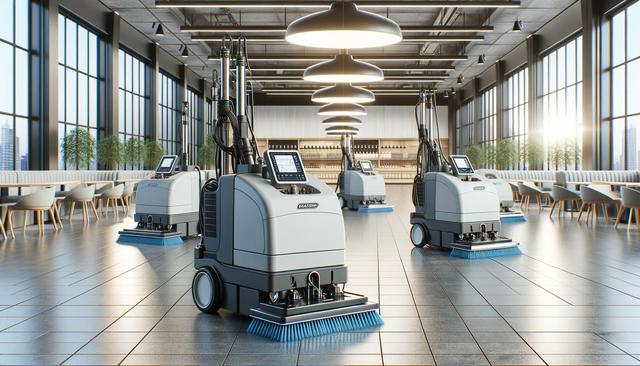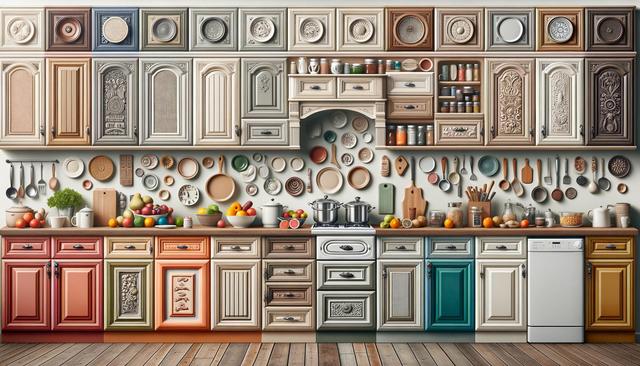Understanding the Different Types of Floor Cleaning Machines
Floor cleaning machines come in a wide variety of models, each designed for specific cleaning needs and environments. Common types include scrubbers, polishers, sweepers, and steam cleaners. Scrubbers are ideal for deep cleaning hard surfaces like tile and concrete, using rotating brushes and cleaning solutions to remove dirt and grime. Polishers, on the other hand, are used to achieve high-gloss finishes on floors such as marble or hardwood. Sweepers are efficient for collecting dust and debris, making them suitable for large industrial spaces. Steam cleaners use high-temperature steam to sanitize surfaces without chemicals, an option often favored in environments requiring hygienic standards such as hospitals or food processing areas.
Choosing the right machine depends on various factors such as the type of flooring, the size of the area, and the level of foot traffic. For instance, larger facilities might benefit from ride-on scrubbers, while compact, walk-behind models are better suited for smaller spaces or tight corners. Understanding these options allows users to select a machine that aligns with their specific maintenance goals.
Benefits of Using Floor Cleaning Machines Over Traditional Methods
One of the primary advantages of using floor cleaning machines is their ability to deliver consistent and efficient results. Traditional cleaning methods like mopping and sweeping often leave behind residues or fail to fully remove embedded dirt. In contrast, machines are designed to provide thorough cleaning with minimal human effort. This not only improves hygiene but also saves time, especially in larger areas.
Additional benefits include:
- Improved safety by reducing slip hazards
- Lower water and chemical usage in modern machines
- Extended lifespan of flooring materials due to proper maintenance
- Reduced physical strain on cleaning staff
These machines also enhance productivity by allowing cleaning crews to cover more ground in less time. For businesses, this translates into cost savings and a cleaner environment that leaves a positive impression on visitors and clients alike.
Key Features to Consider When Selecting a Floor Cleaning Machine
Selecting the right floor cleaning machine involves evaluating several key features to ensure it meets your specific needs. One of the most important considerations is the machine’s power source. Options include corded electric, battery-powered, and propane-fueled models. Each has its pros and cons—electric machines are generally quieter and more eco-friendly, while propane variants offer extended run times for large-scale tasks.
Other important features include:
- Tank capacity for water and cleaning solutions
- Ease of maneuverability and controls
- Brush type and pressure for various floor materials
- Noise levels, especially in noise-sensitive environments
Smart features such as automated settings, digital displays, and programmable cleaning routes are becoming increasingly common. These advancements help reduce operator error and improve cleaning consistency. Understanding these features ensures that you invest in a machine that delivers both performance and ease of use.
Maintenance Tips for Longevity and Performance
To maximize the lifespan and effectiveness of floor cleaning machines, regular maintenance is essential. Neglecting maintenance can lead to reduced efficiency, increased repair costs, and a shorter operational life. Basic maintenance includes cleaning the brushes and pads after each use, emptying and rinsing tanks, and checking for wear and tear on moving parts.
Here are some maintenance practices to follow:
- Inspect and replace worn brushes or pads regularly
- Check battery health and charging systems in battery-powered units
- Clean filters and nozzles to prevent clogs
- Store the machine in a dry, sheltered area to avoid moisture damage
Following the manufacturer’s maintenance schedule and using only recommended parts and cleaning agents also play a crucial role. Proper upkeep not only enhances performance but also ensures safety for both operators and floor surfaces.
Applications Across Various Industries
Floor cleaning machines are widely used across multiple industries due to their adaptability and effectiveness. In retail and hospitality, clean floors contribute to a welcoming atmosphere, while in healthcare facilities, hygiene is critical to prevent cross-contamination. Educational institutions benefit from these machines to maintain a clean and healthy environment for students and staff.
Industries where floor cleaning machines are frequently used include:
- Warehouses and logistics centers for dust and debris removal
- Offices and corporate buildings for daily maintenance
- Airports and public transportation hubs for high-traffic areas
- Manufacturing plants where cleanliness affects product quality
The versatility of these machines allows them to adapt to different floor types and cleaning demands. Whether it’s a polished lobby floor or a gritty warehouse surface, there’s a machine designed to handle the task efficiently. As cleanliness standards continue to rise across sectors, investing in reliable floor cleaning equipment becomes increasingly important.
Conclusion: Making an Informed Investment in Floor Cleaning Solutions
Floor cleaning machines offer practical, efficient, and scalable solutions for maintaining cleanliness in a variety of settings. From large commercial spaces to smaller residential applications, these machines provide a measurable improvement in hygiene, safety, and productivity. Understanding the different types, features, and maintenance needs allows users to make informed decisions that align with their cleaning objectives. For facility managers, business owners, or homeowners, investing in quality floor cleaning equipment is a step toward a cleaner, healthier environment.


